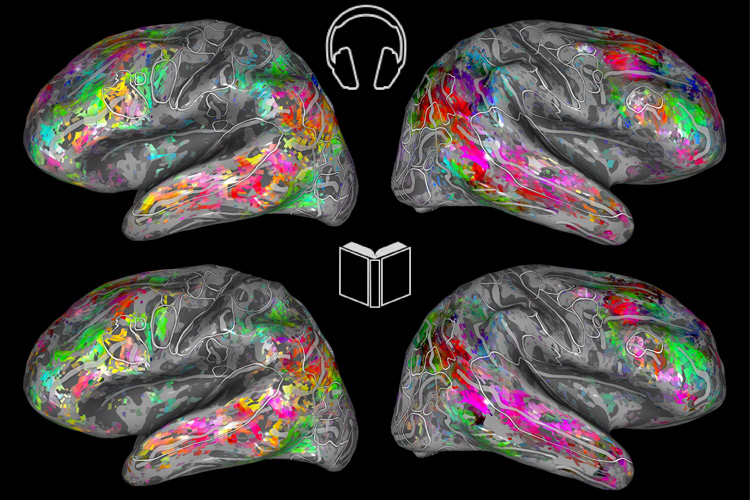A map of the brain could help to guess what you’re reading

A 3D map of how the brain responds to words could unlock new ways to understand and treat dyslexia and speech disorders.
Map-making: Researchers at UC Berkeley used functional MRI to measure nine volunteers’ brain activity (using blood flow as a proxy) as they listened to, and then read, stories from “The Moth Radio Hour,” a storytelling podcast which airs on 500 radio stations around the world. The researchers collected volunteers’ brain activity data for reading (one word at a time, to help separate the data) and listening to recordings of the same text, then matched both sets of data against time-stamped transcriptions of the stories.
Language links: The results were then fed into a computer program, which mapped out thousands of words according to their relationship to each other, using natural-language processing. For example, the “social” category includes words like “husband,” “father,” and “sister.” Different categories sparked activity in different parts of the brain: these “social” words were found on the right side, behind the ear. This area also responded most strongly to words that describe people or dramatic events, as well as words that describe time.
The biggest surprise: The researchers concluded that there are a lot of similarities, in terms of brain activity, between reading and listening to stories, says lead author Fatma Deniz. Until now, the assumption was that there would be clearer differences between the two. The findings were published in the Journal of Neuroscience yesterday, and you can explore the brain map online here.
Why it matters: The findings could help to build clinical applications for dyslexia, by comparing reading and listening maps for people with dyslexia to controls of people without, according to Deniz. Understanding how the brain processes words could also help build better language decoders, helping patients with language disorders, she adds.
Update: We changed this story on 09/03 to include a link to the online brain map.
Sign up here for our daily newsletter The Download to get your dose of the latest must-read news from the world of emerging tech.
Deep Dive
Humans and technology
Building a more reliable supply chain
Rapidly advancing technologies are building the modern supply chain, making transparent, collaborative, and data-driven systems a reality.
Building a data-driven health-care ecosystem
Harnessing data to improve the equity, affordability, and quality of the health care system.
Let’s not make the same mistakes with AI that we made with social media
Social media’s unregulated evolution over the past decade holds a lot of lessons that apply directly to AI companies and technologies.
Stay connected
Get the latest updates from
MIT Technology Review
Discover special offers, top stories, upcoming events, and more.